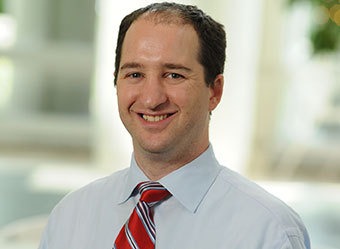
A subanalysis from the ORBIT-AF registry has found that atrial fibrillation patients who receive bridging anticoagulation therapy during anticoagulation interruption are at higher risk of bleeding and adverse events following interruption than patients who do not receive bridging anticoagulation. The report has also shown that bridging anticoagulation in this dataset occurred in one-quarter of anticoagulation interruptions.
Many atrial fibrillation patients on chronic anticoagulation have to undergo procedures that require temporary interruption of oral anticoagulation and some suggest using bridging anticoagulation, write Benjamin A Steinberg (Duke University Medical Center, Durham, USA) and others in Circulation ahead-of-print. However, the use and outcomes of bridging during oral anticoagulation interruptions are unknown.
Steinberg et al analysed data from the ORBIT-AF (Outcomes registry for better informed treatment of atrial fibrillation) registry-a US prospective, observational study of outpatients with atrial fibrillation. The subanalysis included 7,372 patients on oral anticoagulation at baseline. The researchers recorded only interruptions for procedures and found 2,803 interruptions (non-cardiac surgery=27%, other procedures=25% and endoscopy=18%). Twenty four per cent of these interruptions used bridging anticoagulation (low-molecular weight heparin was used in 73% of patients, unfractionated heparin in 15%, fondaparinux in 1.1% and another anticoagulant in 11%). There were 23 interruptions involving bridging in patients treated with dabigatran at baseline. The authors note that bridged patients more likely had prior cerebrovascular events and mechanical valve replacements.
Steinberg et al found that bleeding events were more common in bridged patients than non-bridged (5% vs 1.3%, adjusted OR 3.84, p,0.0001) and that incidence of myocardial infarction, stroke or systemic embolism, major hospitalisation or death within 30 days was also significantly common in patients receiving bridging (13% vs. 6.3%, adjusted OR 1.94, p=0.0001).
The researchers note that the rate of bridging found in this study was higher than what has been reported in contemporary trials and that bridging anticoagulation “appeared to be used more commonly than the guidelines would suggest”. For instance, they found that a significant number of oral anticoagulation interruptions were for dental procedures (9% of all interruptions) and 8% of those involved use of a bridging anticoagulant. “Guidelines [from the American College of Chest Physicians) recommend more conservative management of bridging medications and also call attention to scenarios where oral anticoagulation could be continued without interruption (eg. dental procedures).”
The researchers conclude that the data from this analysis “do not support the use of routine bridging in anticoagulated patients with atrial fibrillation” and that “additional data are needed to identify best practices around anticoagulation practices.”
In an accompanying editorial, Amir Shaikh and David McManus (University of Massachusetts Medical School, Worcester, USA) comment that the findings from this study “fly somewhat in the face of conventional dogma and may begin a paradigm shift away from the routine use of a bridging strategy for atrial fibrillation patients undergoing procedures.”









